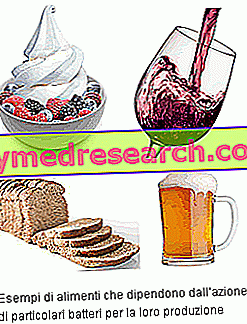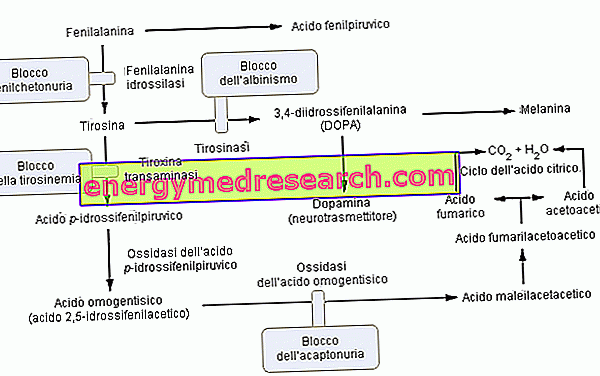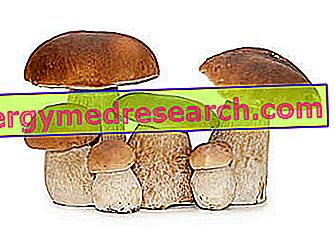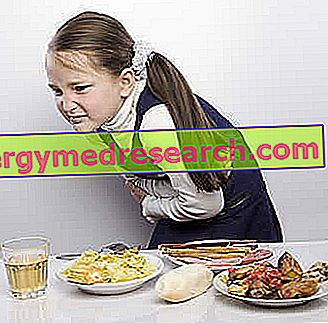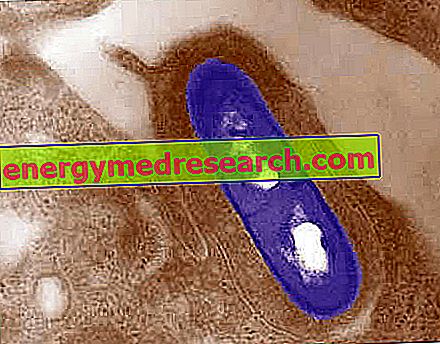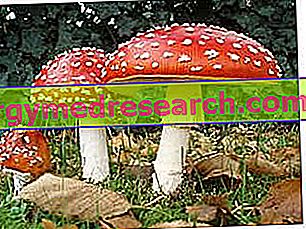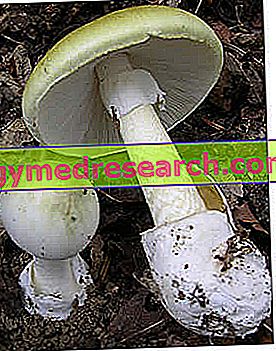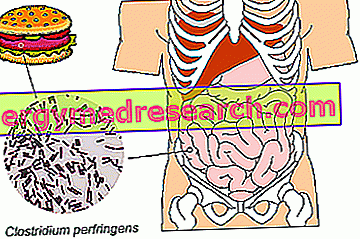Food infections are caused by the ingestion of foods contaminated by various pathogens . If the disease is caused directly by the presence of an often high number of microorganisms in a food, it is called food poisoning . When it is due to the toxins produced by the germs in the food, however, we speak of intoxication
Category food diseases
Bacteria in food can be the result of: a processing (more or less sophisticated) of the raw material by man an unpleasant and unwanted contamination, potentially harmful for the health of the consumer. What are bacteria? Bacteria are prokaryotic unicellular organisms totally different from other more complex life forms, instead defined as eukaryotes; the bacteria DO NOT possess a cellular nucleus and the dimensions of the entire structure are about a thousand times lower than those of a eukaryotic cell; the bacteria multiply thanks to the association of self-replicating elements which, unlike w
What is phenylketonuria Phenylketonuria (PKU) is an autosomal recessive hereditary metabolic disorder that affects 1 individual per 10, 000, indiscriminately, whether we speak of white and black race, although it seems to occur more in homozygosity than heterozygotes. Belonging to the group of hyperphenylalaninemias, phenylketonuria significantly impairs the metabolism of phenylalanine and in particular its conversion to tyrosine; phenylketonuria is recognized by the high urinary levels of phenylalanine and some derivatives (phenylpyruvate, phenylacetate, phenylactate and phenylacetylglutamine)
What are What are edible mushrooms? Edible mushrooms are all those that, inserted in the diet of a healthy subject and not suffering from particular uncomfortable conditions, do not generate any type of adverse reaction; in this group are also inserted those with a pleasant taste or in any case not bad, while "disgusting" are excluded
Gastroenteritis is an intestinal disorder that manifests a specific clinical symptomatology, which can start in a similar way due to different etiological agents. Causes The diagnosis of INFECTIOUS gastroenteritis does not exclude the concomitant presence of other intestinal suffering (inflammatory diseases: ulcerative colitis, Crohn 's disease , irritable bowel syndrome, etc
Generality What are food poisonings? Food poisoning, commonly called "food diseases", are diseases caused by the consumption of food contaminated by toxic agents. Note : intoxication and poisoning are problems with a different level of severity, so much so that, for example, in the classification of macromycete mushrooms (those in the shape of a mushroom, so to speak) the toxic species can be clearly distinguished from the poisonous ones
Introduction Listeria is a bacterium belonging to the category of bacilli; it is optional aerobic (it survives both in the presence and in the absence of oxygen), non-spore-forming (it does not produce spores), sensitive to acid pH and classified among the gram negative (Gram -), therefore it is able to produce lipid endotoxins resistant to high temperatures
Introduction to mushroom toxicity The first essential notion to keep in mind when assessing the edibility or toxicity of fungi is as follows: "Fungus, qualiscumque sit, semper malignus est" - The fungus is always harmful to health, whatever it is. The toxicity of the fungi is distinguished in intrinsic (own) and extrinsic toxicity, the latter originating from the environment in which it is found and which foresees the contamination from: chemical principles, radioactive agents and heavy metals
Summary on the Amanita Phalloides Scroll down the page to read the summary table on the Amanita phalloides Amanita phalloides Founder of highly deadly poisonous mushrooms Ingestion → severe poisoning syndromes, with ominous outcome in the vast majority of cases Polymorphism → strong ability to "camouflage" and to assume innumerable morphological features Amanita phalloides: terminology More different names: angel of death, bastard ovule, Agaricus phalloides, Tignosa verdognola and Tignusa morteada Etymology → phalloides: phallòs (phallus) and eîdos (form) → phallic conformation of the
Hazard of the Amanita Phalloides Subtle and equivocal, the Amanita phalloides is the progenitor of the highly deadly poisonous mushrooms: its ingestion causes serious poisoning syndromes, with ominous results in the vast majority of cases (death in 70-80%). The Amanita phalloides causes death even after the only half-cap of the mushroom is swallowed: in this regard, in similar situations, it can be stated that the maxim of Paracelsus ("it is the dose that makes the poison ") is not validly confirmed practical
Presentation of the bacterium Clostridium perfringens is a bacterium protagonist of numerous food poisonings; to speak in more specific terms, enterotoxins produced by Clostridium perfringens can trigger a food poisoning - normally not dangerous - after the ingestion of contaminated food. The pathogen, after an incubation time varying from 8 to 16 hours from the intake of the infected food, triggers typically gastrointestinal symptoms (diarrhea and abdominal cramps): for this reason, we speak of Clostridium perfringens enteritis , an intestinal inflammation which tends to self-cancel within a f


